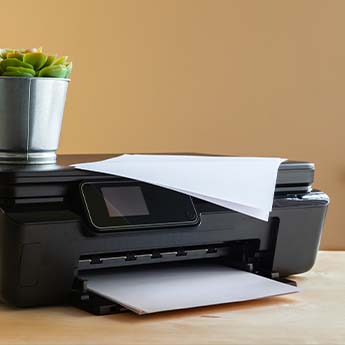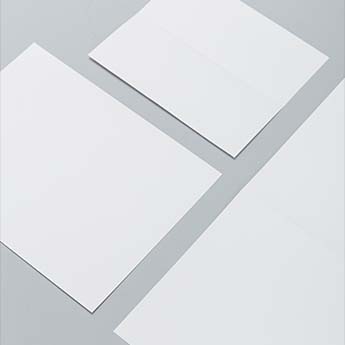Paper Buying Guide
Ah - the humble sheet of paper - or is it? Did you know - incredibly, it only takes 42 foldings of a piece of paper (standard paper here no funny tricks) to get from the Earth to the Moon, and only about 94 foldings of a paper to make something the size of the entire visible Universe. Here's how: a ream of paper is about 5 cmhigh. If that’s a 500 page ream we’re talking about, that means each individual sheet is about 0.01 cm high. By time you get to 9 foldings, the folded paper would be thicker than the original ream of 500 sheets. By time I’d get to 20 foldings, my folded paper is more than 10 kilometers high - what? Yes, 10km high, which is taller than Mount Everest!!! If you keep going, you’ll be in outer space after 24 foldings, you could reach the Hubble Space telescope after 28, and after 41 foldings, you’d finally be closer to the Moon than the Earth. So that means that 42 foldings is what it takes! And now you know how many times you'd have to fold a piece of paper to reach the Moon! Glorious!!!




“Only on paper has humanity yet achieved glory, beauty, truth, knowledge, virtue, and abiding love.” - George Bernard Shaw
What size paper do I need?
Paper can be a tricky area to navigate at times, with different weights, sizes, textures and finishes. To make it easier, we have put together a handy sizing guide to help you understand the difference between the most common paper sizes. Paper sizes in the UK are named using the letter A. The range starts at A10 (37mm x 26mm) and goes all the way up to A0 (1189mm x 841mm). The most widely used paper size is A4 (210mm x 297mm). It is commonly used for letters and it is the standard paper size for most home printers.
What Size is A5 Paper?
Portrait:
210mm (height) x 148mm (width)
Landscape:
148mm (height) x 210mm (width)
What Size is A4 Paper?
Portrait:
297mm (height) x 210mm (width)
Landscape:
210mm (height) x 297mm (width)
What Size is A3 Paper?
Portrait:
420mm (height) x 297mm (width)
Landscape:
297mm (height) x 420mm (width)
What Size is A2 Paper?
Portrait:
594mm (height) x 420mm (width)
Landscape:
1420mm (height) x 594mm (width)
What Size is A1 Paper?
Portrait:
841mm (height) x 594mm (width)
Landscape:
594mm (height) x 841mm (width)
What Size is A0 Paper?
Portrait:
1189mm (height) x 841mm (width)
Landscape:
841mm (height) x 1189mm (width)
.
With A sized paper, however many times you double the short edge or half the long edge, it will always have the same width to height ratio. For example, the dimensions of A4 paper are 210x297mm, and half of A4 equals A5, and double A4 equals A3. Starting from A0, all subsequent A paper sizes are determined by halving the paper on its longest size. A0 halves to become A1, which halves to become A2, all the way down to A10. So, the length of the smaller size is always equal to the width of the larger size. For example, the length of A4 is 297mm which is also the width of A3.
Foolscap
The Foolscap size, sometimes known as Folio, was an original size used in the British Commonwealth and Europe prior to the introduction of the international standard of the 'A' series, eg. A4. It measures 216 x 343 mm.
What paper weight should I choose?
As well as a range of paper sizes, there are various weights for different uses. Paper weight is generally measured in ‘Grams per Square Metre’ or GSM and is a measurement of paper thickness or density. The higher the GSM value, the heavier the sheet and thicker the quality. The thicker the paper, the more long-lasting the sheet will be. A thinner and lighter paper has a lower GSM. 80gsm is generally used as an everyday printing paper. See the table below for a general guide on the quality required for different applications. Standard paper weight details and their uses are included below for reference:
Sustainability / green claims
Almost all the paper we offer at MBM Omega has at least one environmental claim. Below is a short outline to give you a better understanding of what each claim comprises:
Quality or production type related attributes:
Whiteness
Paper whiteness is measured in CIE. This is a measurement of the amount of light reflecting off the sheet of paper and therefore how ‘white’ the paper appears- the higher the number, the whiter the sheet of paper will appear.








